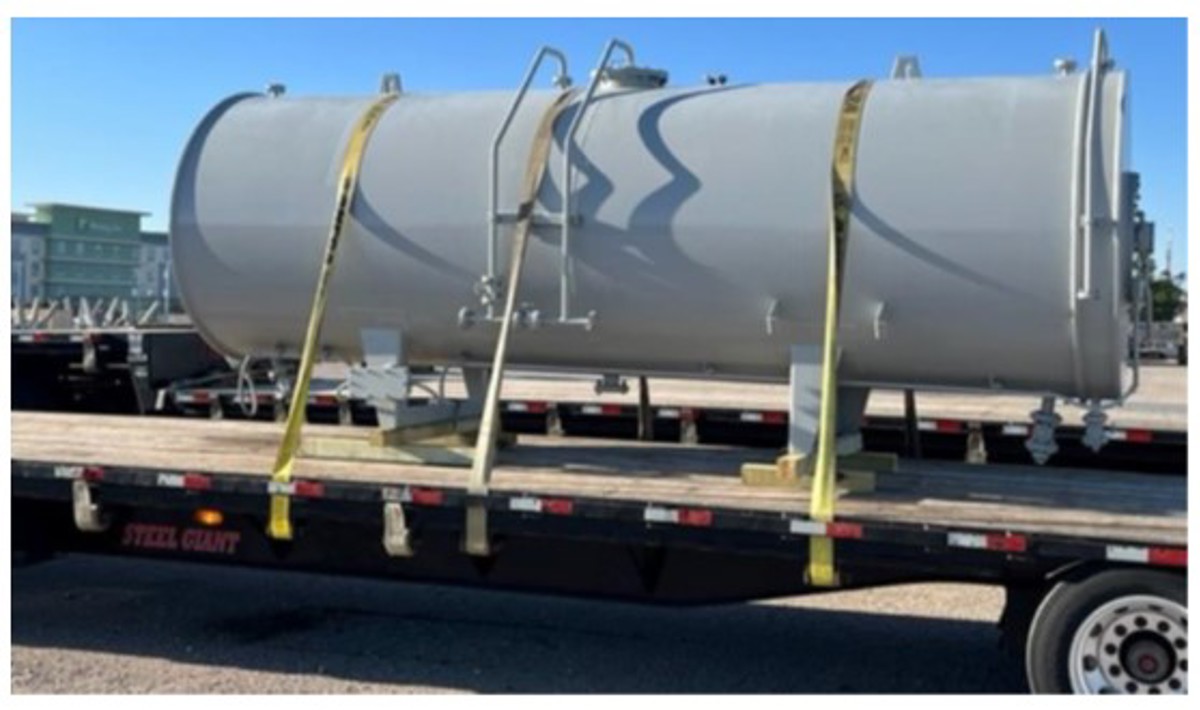Failure of slings during loading operations
- Safety Flash
- Published on 24 October 2022
- Generated on 23 December 2025
- IMCA SF 23/22
- 2 minute read
Jump to:
Personnel were loading out heavy plant at a land-based location when there was an incident involving failure of slings.
What happened?
A crew were lifting a large tank with a forklift using nylon slings and shackles from the lifting eyes at the top. The forklift carrying the tank to the trailer had to move over some rough ground and the tank was moving around and bouncing, so spotters were used on both sides. One sling failed and the tank dropped to the ground on that side. Then another sling failed, causing damage to both sides of the tank bottom, valves, and one leg was bent. There were no injuries.
Work was stopped to regroup and discuss.
What went right
- A toolbox talk took place which covered the hazards.
- Spotters were used and all personnel were in their correct and safe positions.

What went wrong?
- The slings broke due to the sharp edges not being protected there would have been high dynamic loads as the load shifted while being manoeuvered over rough ground.
Recommendations
- Ensure sharp corners and edges are protected before using soft slings – it is possible in this case that the edge of a fork was the sharp edge that cut the sling.
- A better practice would be to use a lifting attachment of some sort, or a crane – could the lift be done without soft slings?
Related safety flashes
-
IMCA SF 17/22
14 July 2022
-
IMCA SF 05/21
11 February 2021
-
IMCA SF 09/13
18 June 2013
-
IMCA SF 10/13
25 June 2013
IMCA Safety Flashes summarise key safety matters and incidents, allowing lessons to be more easily learnt for the benefit of the entire offshore industry.
The effectiveness of the IMCA Safety Flash system depends on the industry sharing information and so avoiding repeat incidents. Incidents are classified according to IOGP's Life Saving Rules.
All information is anonymised or sanitised, as appropriate, and warnings for graphic content included where possible.
IMCA makes every effort to ensure both the accuracy and reliability of the information shared, but is not be liable for any guidance and/or recommendation and/or statement herein contained.
The information contained in this document does not fulfil or replace any individual's or Member's legal, regulatory or other duties or obligations in respect of their operations. Individuals and Members remain solely responsible for the safe, lawful and proper conduct of their operations.
Share your safety incidents with IMCA online. Sign-up to receive Safety Flashes straight to your email.